As part of the Larrakeyah Defence Precinct Open Day in Darwin this year, members of the Marine Rotational Force Darwin and VMM 268 “Red Dragons” provided a now familiar foreign flavour to the displays that were on hand. The open day officially launches the Northern Territory’s Navy Week 2017.
The MV-22B Ospreys have been a common sight and sound around Darwin since arriving late April this year. Today was a opportunity for the public to again see the unique aircraft up close as some would remember attending a similar display provided by a MV-22B from VMM-265 back in July 2015.
After loitering over Darwin harbour and the crowds being ushered back to the boundary of the oval, MV-22B ’05′ piloted by 1st T.J Lt Flanagan performed an initial low level flypast over HMAS Coonawarra to grab the crowds attention, which it certainly did.
Then transitioning from forward flight to hover mode, the Osprey gently landed in the centre of the oval throwing up some grass and leaf clippings. Prior to arriving the crowds had been reminded to restrain loose objects like hats, umbrellas and prams (and jokingly – small children) to ensure they weren’t blown away by the considerable downwash generated by the two proprotors.
Once on the soft ground and with a slight tilt forward to the rotors, the rear ramp and side door opened and two crew members emerged to perform some post landing checks such as nose landing gear safety pin and main landing gear chocks being placed in position. Shortly after the the Rolls-Royce turbines were shut down and the rotors ceased their most distinctive sound.
It wasn’t long before the curious crowd wandered over and began inspecting the Osprey – many for the first time. It was a great opportunity for the public to have a real close up look, take photos and ask the crew a myriad of questions about this strang beast.
The Boeing/Bell MV-22B Osprey is a peculiar looking aircraft with two large Proprotors that enable it to perform both like a helicopter when taking off or landing and a conventional aeroplane when in forward flight.
I was fortunate to casually chat with the Pilot, 1st Lt T.J Flanagan, and asked him how the aircraft was dealing with the dusty conditions – extra maintenance and he remarked, pointing to a brown patch over the right hand undercarriage housing, how much Northern Territory dust has been collected while performing operations in the Bradshaw and Mt Bundey training areas. He explained that the conditions often result in a brown out when they are about to land at remote Territory landing fields due to the dust swirling around from the rotor downwash. He told me they have equipment attached to the helmet that they can use which provides a daylight HUD (Heads up display) indicating flight parameters relating to position and attitude of the Osprey. He also explains that while the Aircraft Commander sits in the right seat, maintaining overall command and communications, he is directing the pilot in the left seat who does the actual hands on flying.
I asked him about the training he went through and he said – we start out at the same level but end up with choices of jets, like the Hornet or Harrier, props, helicopters or tilt-rotors. Initial training is in single engine aircraft learning basic flight control – then progress to both twin engined aircraft – the Beech 200 or UC-12 Huron as it is known – and the TH-57 Sea Ranger, the military equivalent of a Bell-206, if you are streamed to Tilt-Rotors.
Training for the Tilt-Rotors is carried out at Marine Medium Tilt -Rotor Training Squadron 204 (VMMT-204) located at MCAS New River in North Carolina. From there the USMC Aviators can be posted to one of nearly 20 Tilt-Rotor squadrons.1st Lt Flanagan explains the latest version of the MV-22 simulator is really amazing – it is a full motion simulator that has movement in all three axis and can simulate the acceleration and deceleration feeling of a real aircraft. The visual cues from hi definition screens out the windows generates very real environment imagery.
The training is unique as there is an additional aspect to consider when transitioning to or from hover flight and forward flight. He explains that the control inputs are complicated because the cyclic (stick) and the collective (in old terms), the thrust control lever, are ok in full airplane or full helicopter modes – it’s the area between that can be a challenge to fresh pilots. The throttle/pitch control slides forward and backwards and not up and down like a collective stick in a helicopter and it is easy for a new pilot to ‘balloon’ their landing – apply to much thrust instead of reducing, because it is actually rotor lift – when transitioning from the aerodynamic lift of the wings.
He goes on to explain some unique features of the Osprey – exhaust deflectors for when the aircraft lands, diverting most of the hot exhaust outboard and not directly at the ground – pointing to the oval grass under one engine, he says that wouldn’t last too long after a few landings. He also spoke of the trials on the deck coating materials where they were required to land and remain in position over various experimental pads covered in different coatings to determine which worked better.
Another feature of the MV-22B is the unique rotor driveline. Although, he says, there are two turbines, each is connected and synchronised via driveshafts in a central gearbox located over the main fuselage. Should one engine fail in forward flight there would be hardly any noticeable difference in performance as the Osprey is still generating lift by it’s wings as the drivetrain engages both rotors to one engine. When in hover mode it is a very different scenario because all lift is generated by the rotors which require a large amout of available horsepower.
The mid wing gearbox also provides auxiliary systems such a hydraulic #3 and the Environmental Conditioning System (Air conditioning)- he then smiles and says it’s broken on this machine. But hey, it’s the dry season in the NT I respond.
I mentioned the rotor tip LED lighting I have seen in night pics and he laughs and say that it is really cool system- they can be adjusted for brightness and frequency or a strobe effect. He grins and says he doesn’t know why they don’t use that mode – its very cool.
While we have been chatting the line of people waiting to walk up the rear ramp, through the fuselage and out the front service door hasn’t reduced less that 25m. A good sign the public is satisfying their curiosity, especially the young kids who are full of questions for the Marines, and of course it was a perfect opportunity for a few selfies.
With more questions from other visitors beginning to be asked of 1st Lt Flanagan, I say farewell as he takes up my offer off a few free photos that I will send him, and wander off avoiding the still constant flow of people. The USMC Osprey was certainly a winner for the public today, maybe not for the grounds keeper as I chuckle to myself while looking at how deep the nose wheels have sunk into the cricket pitch grass.
At about 5:45 pm the crew fire up “05” and after obtaining clearance from Darwin Tower, depart the oval at Larrakeyah.
For most of the next hour the crew practice various approach types to RAAF Base Darwin with missed approaches thrown in for good measure, finally landing just after the sun has dipped below the horizon.
I have a feeling this isn’t the last year we will see the USMC Ospreys operating out of Darwin and look forward to them returning possibly next year. VMM-268 and HMLA-367 are due to depart in the next month or so, ending this years MRF-D ACE (Marine Rotational Force – Darwin Air Combat Element) Fortes Futuna Juvat
A big thanks to the crews from the Red Dragons for taking the time to open up their tilt-rotor world to ASO and the public of Darwin.
Cheers Sid Mitchell
sid@aviationspottersonline.com
My kit is Nikon D7100, Nikkor 18-300mm, 70-200mm and 200-500mm with a sandisk card.




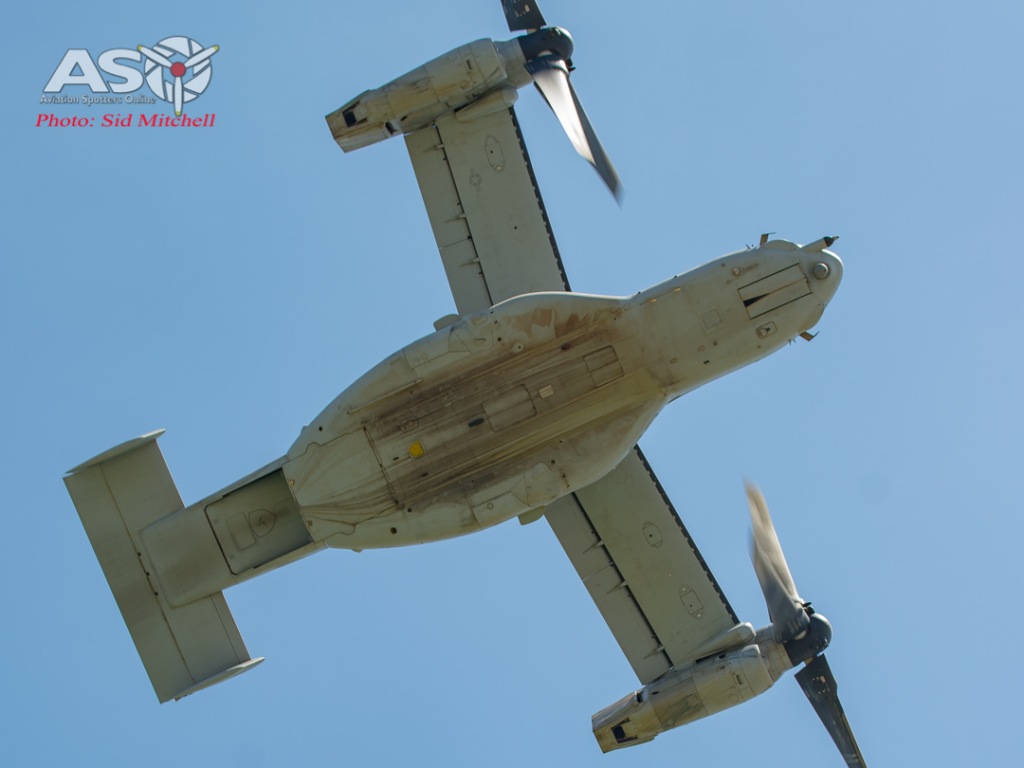


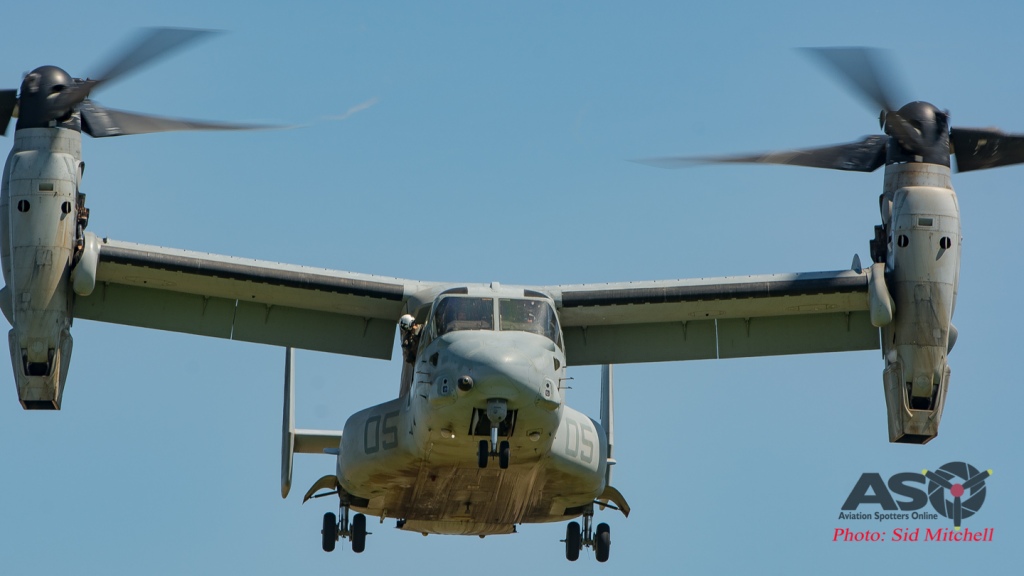
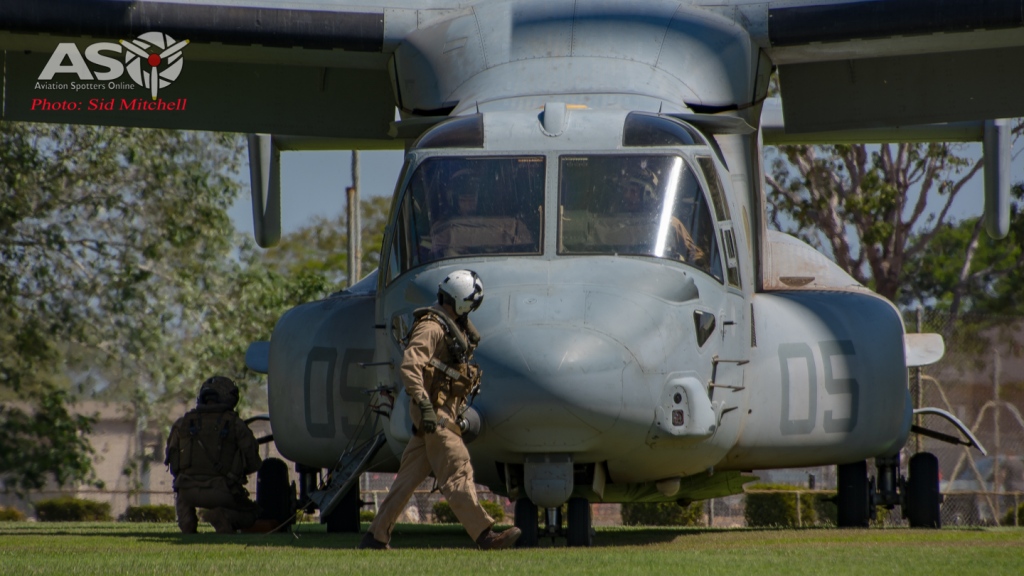

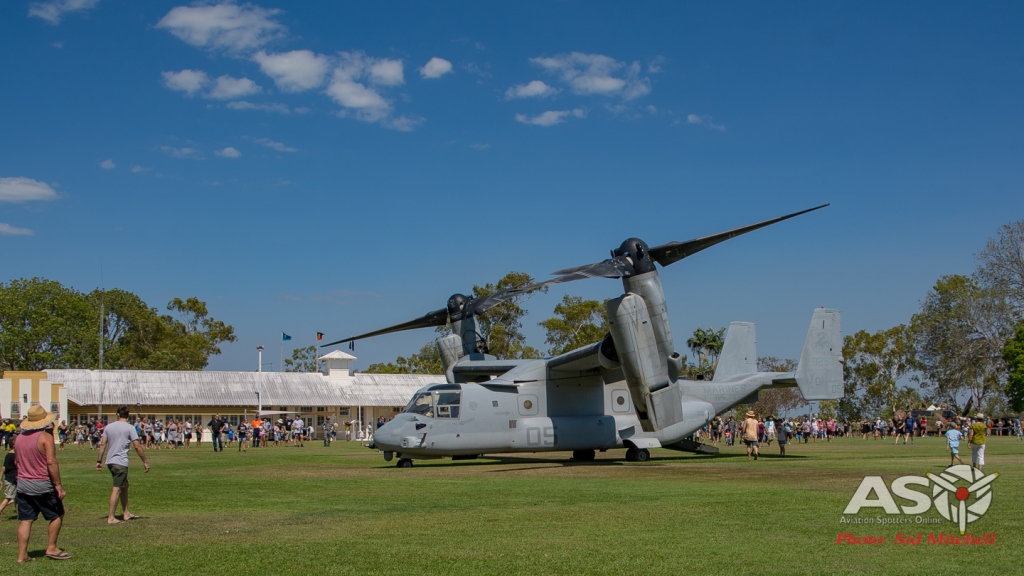
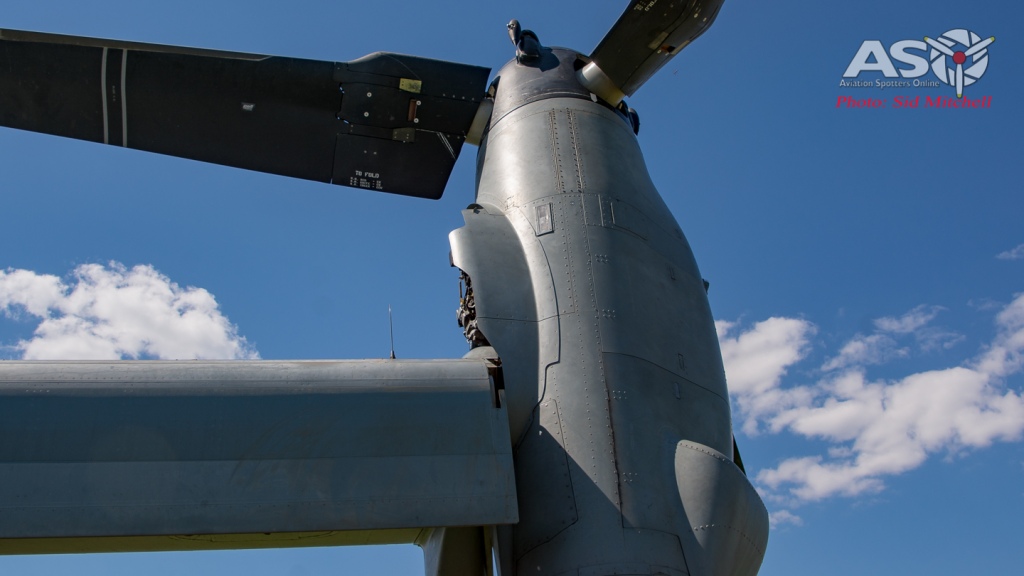


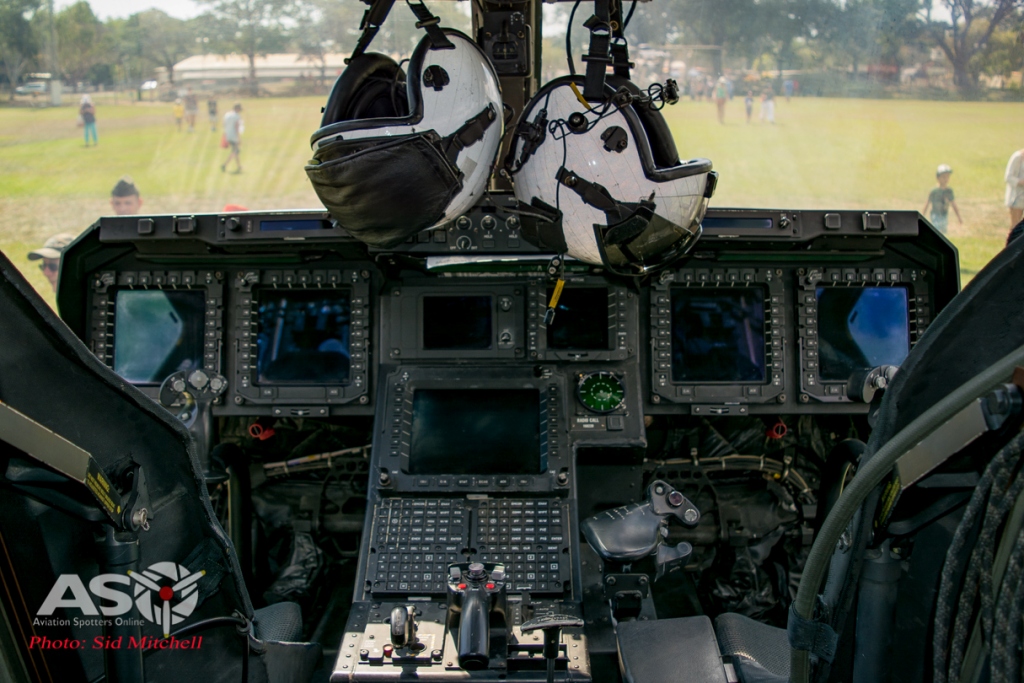
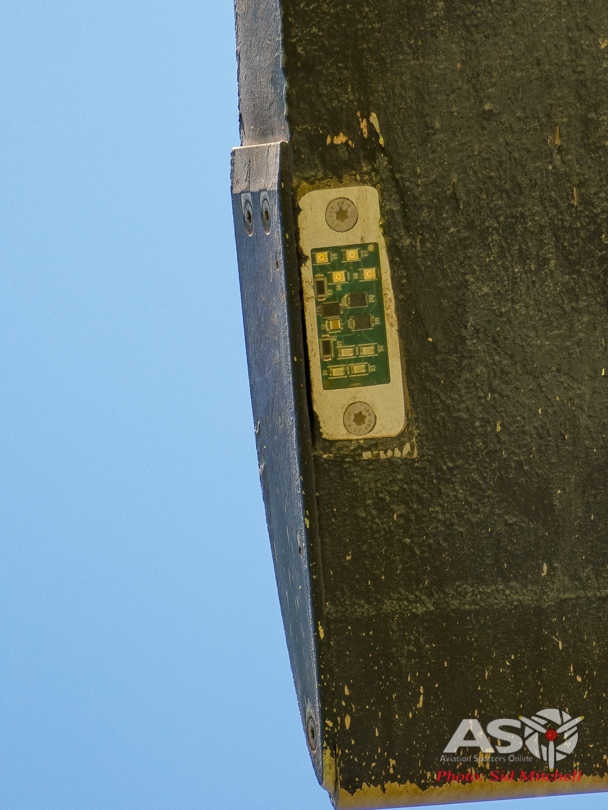
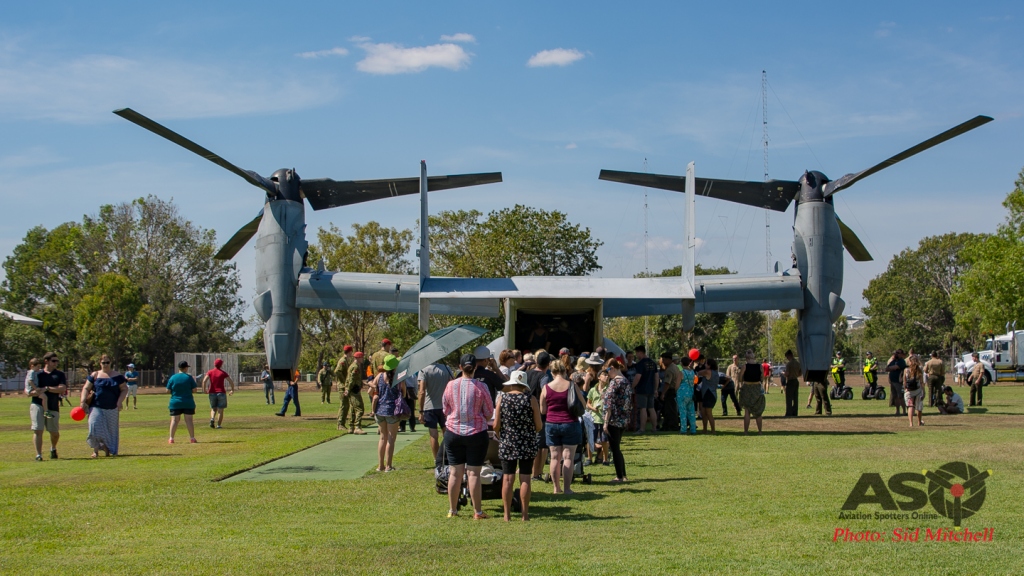
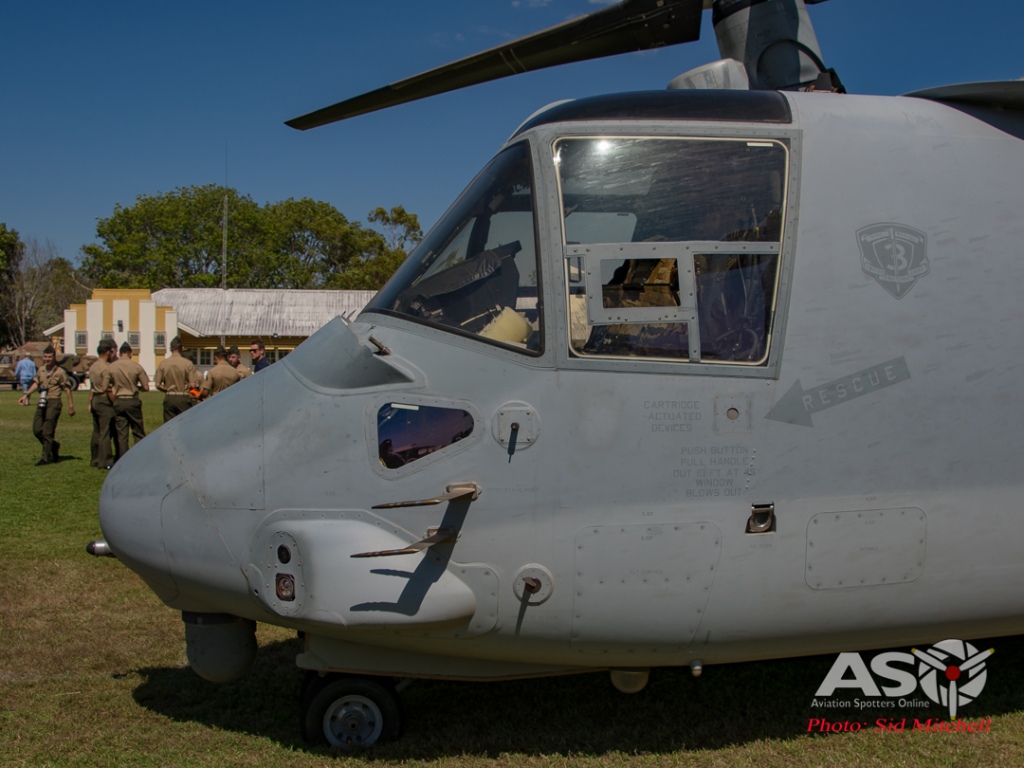
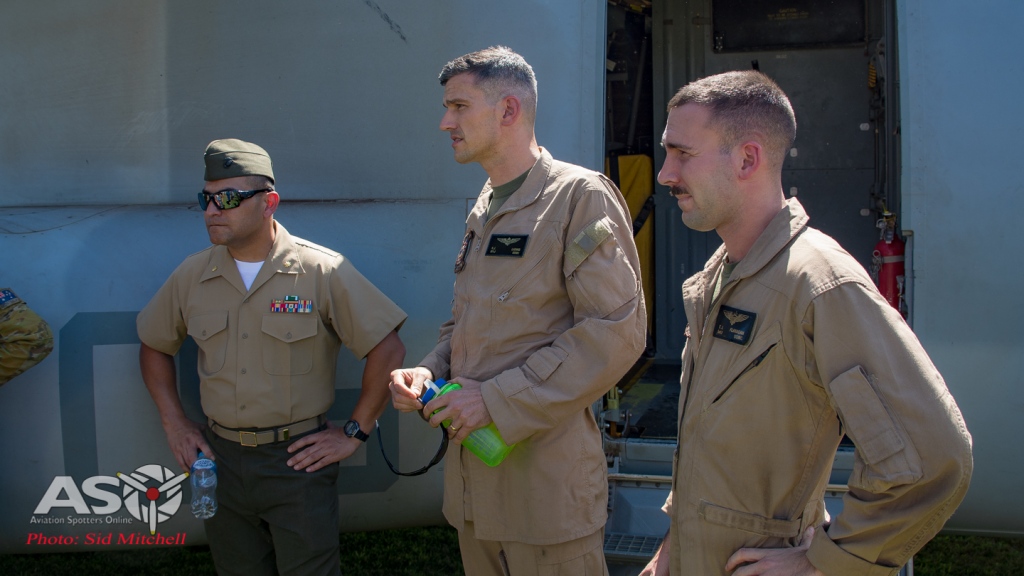
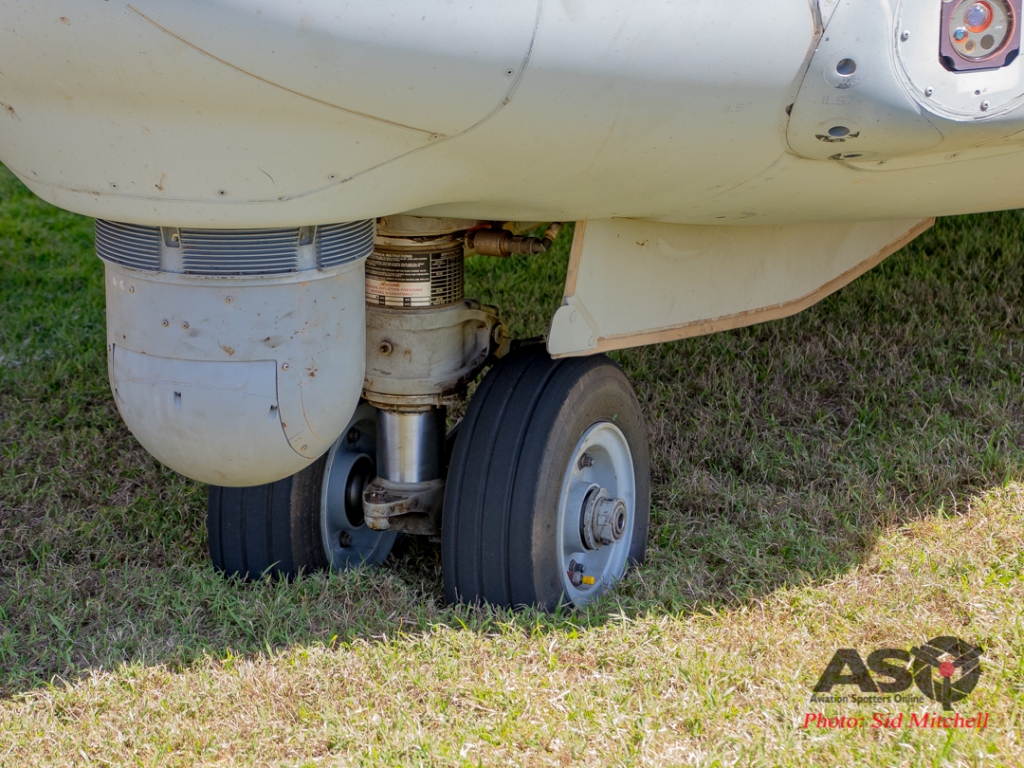
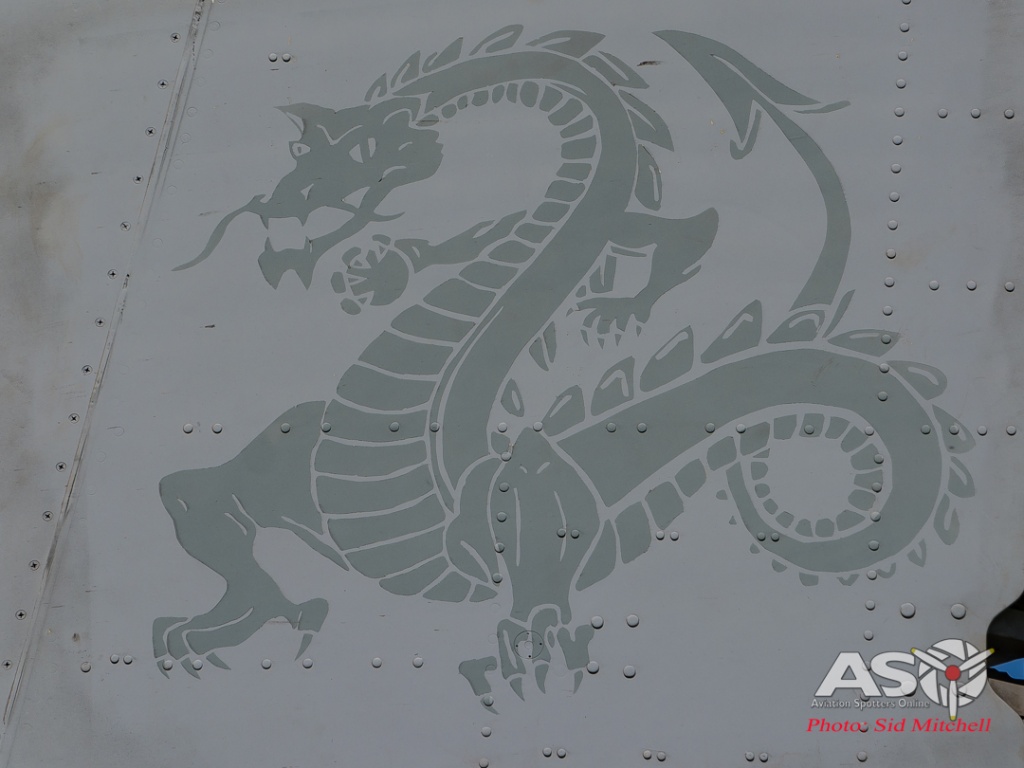
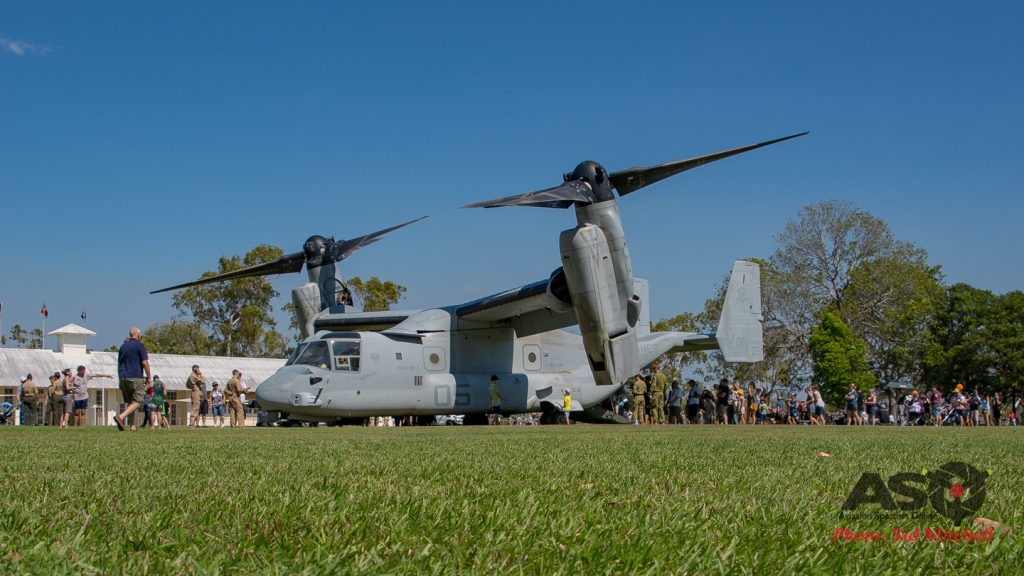


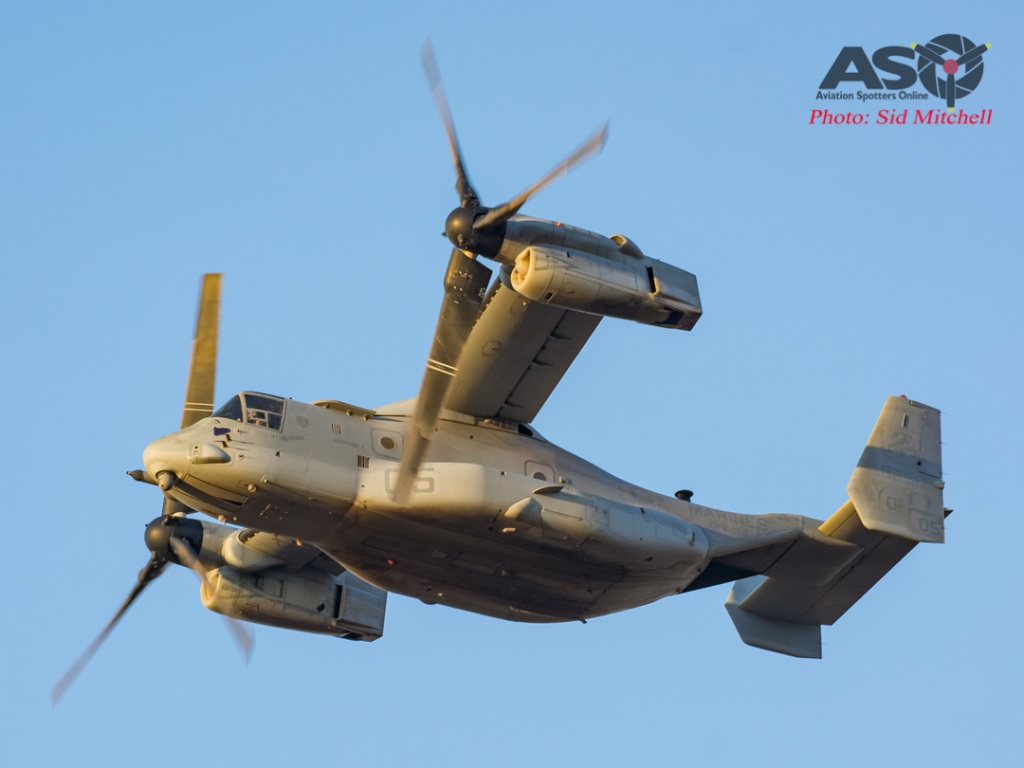




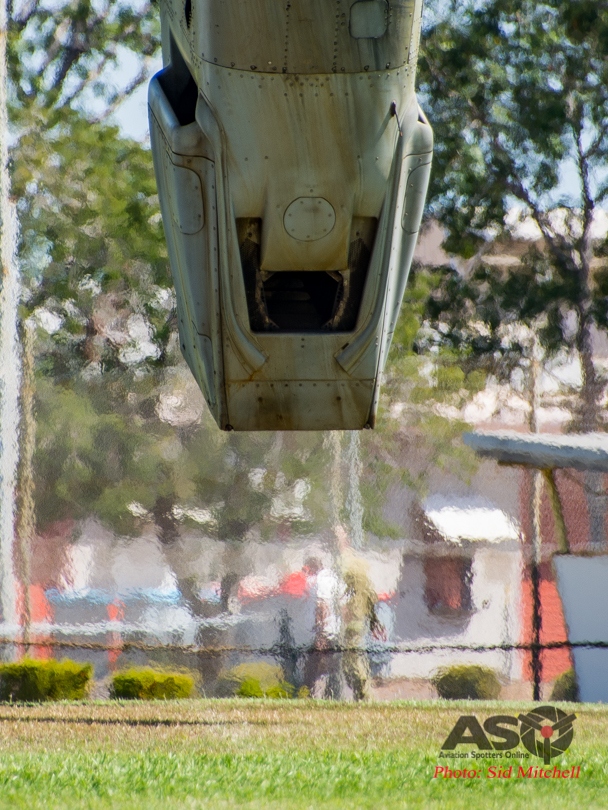




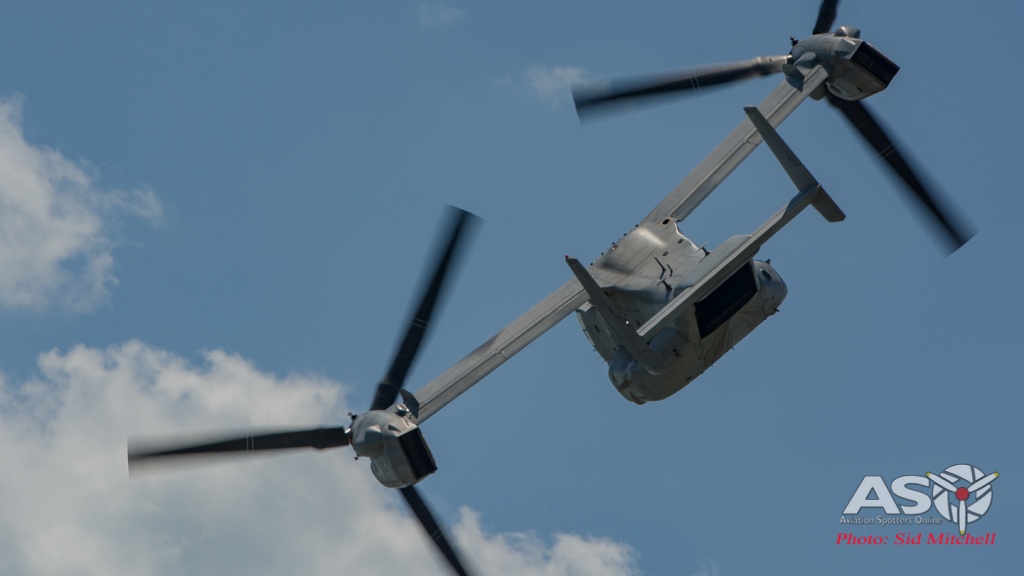





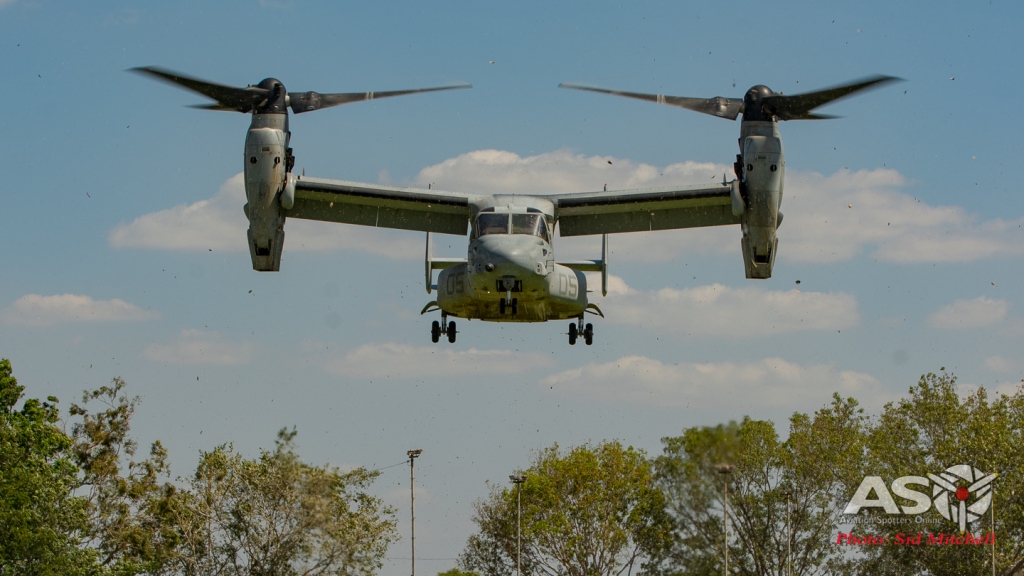


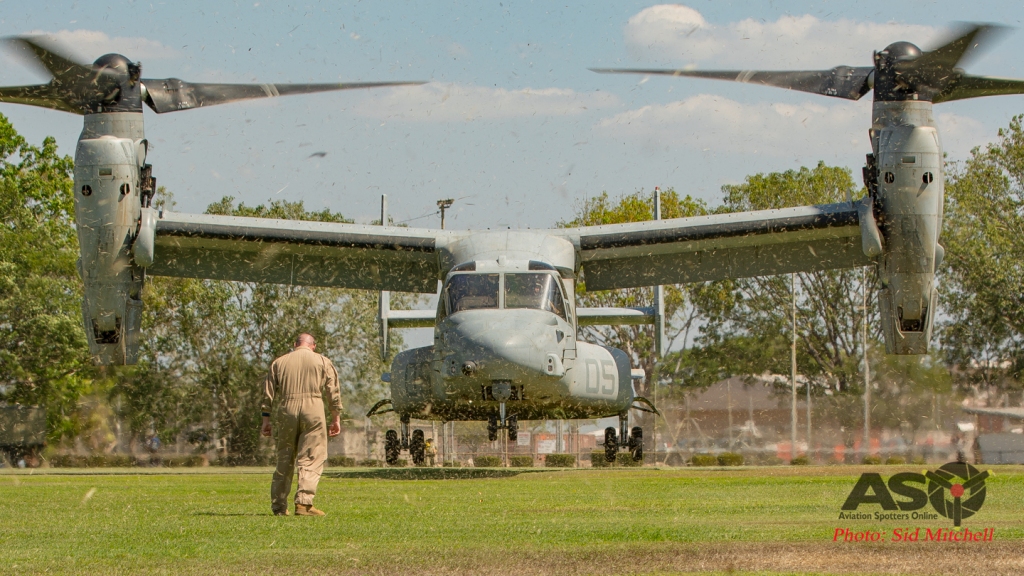
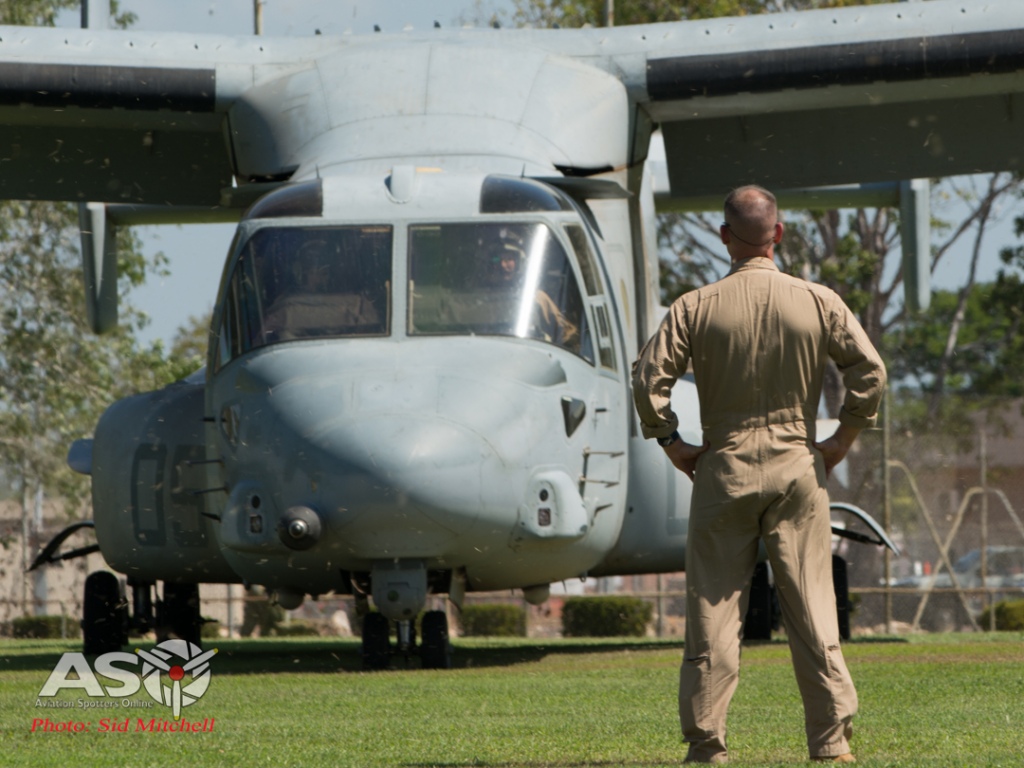

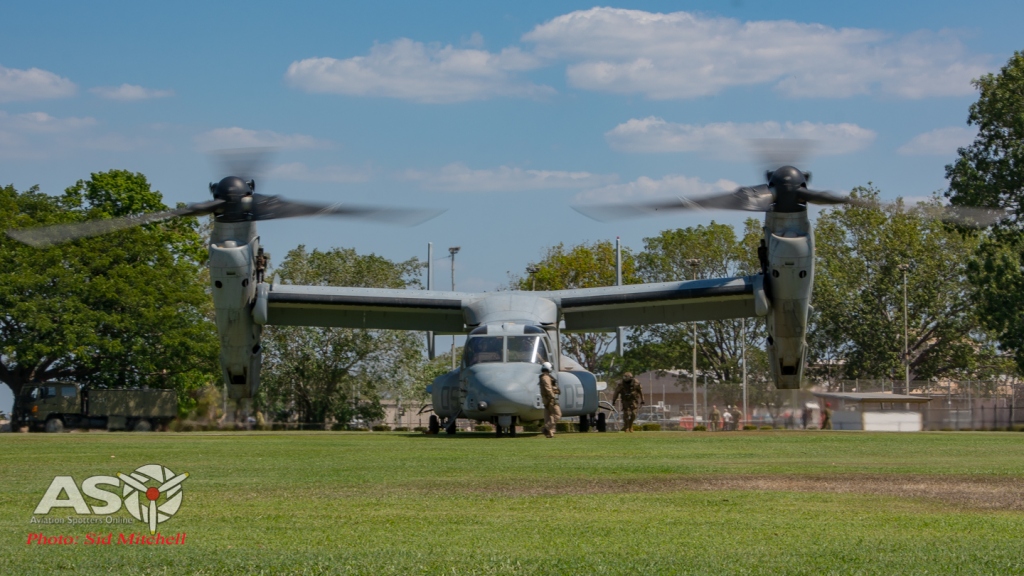


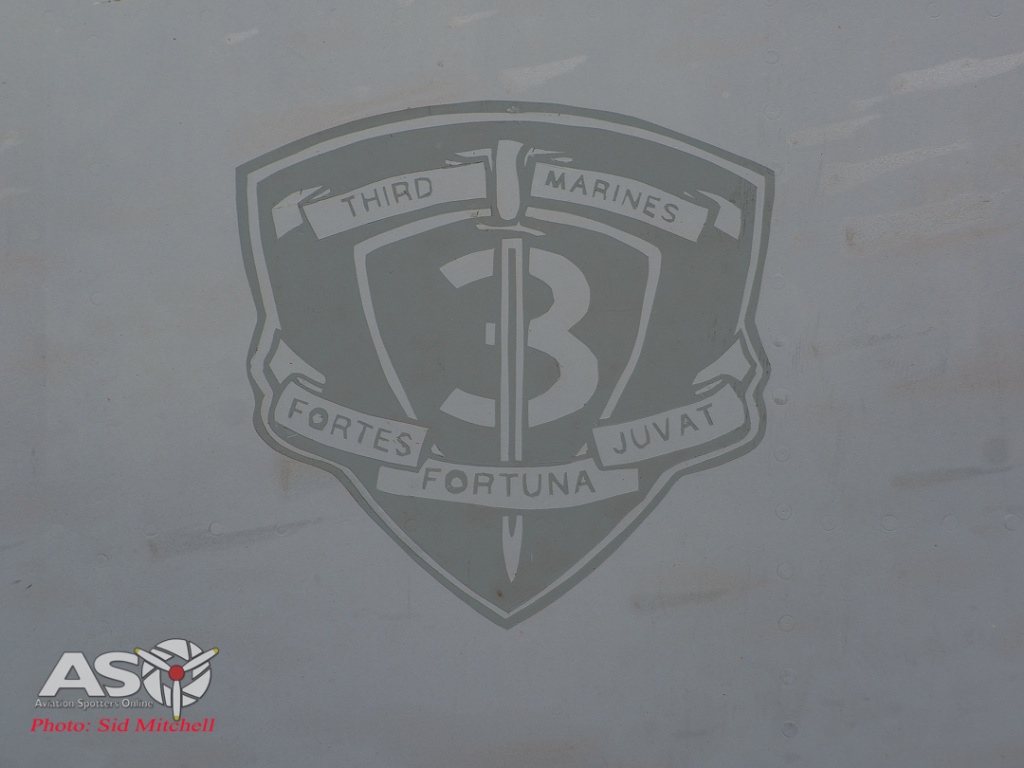

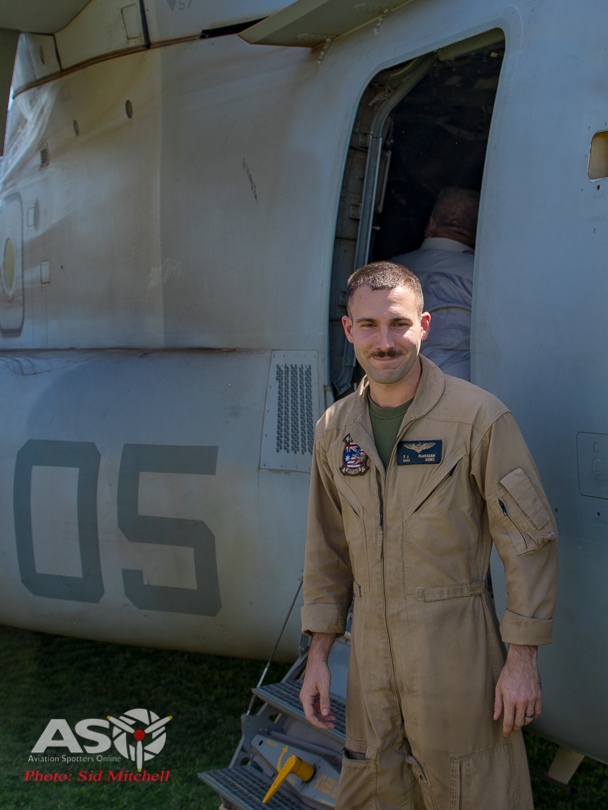






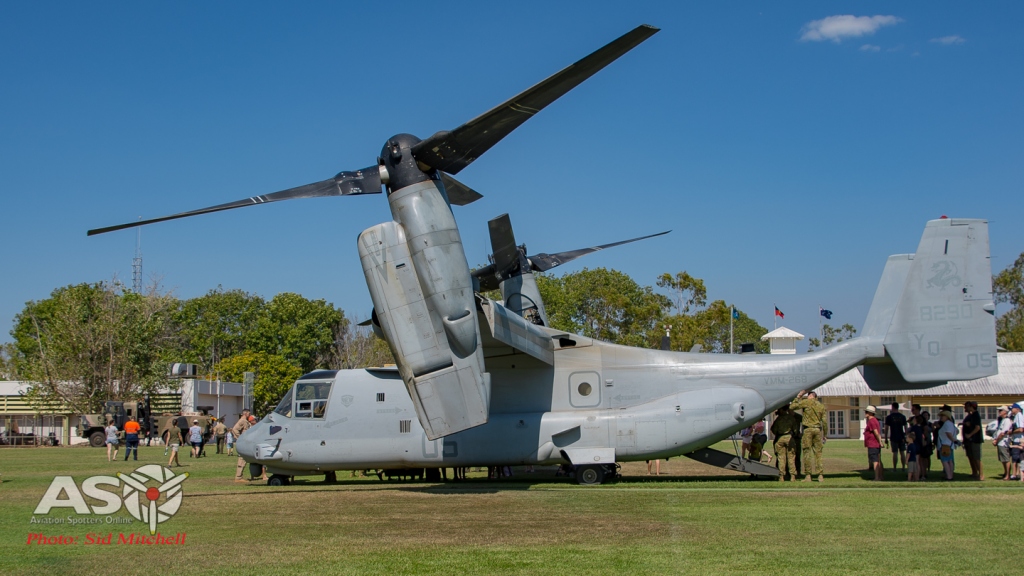
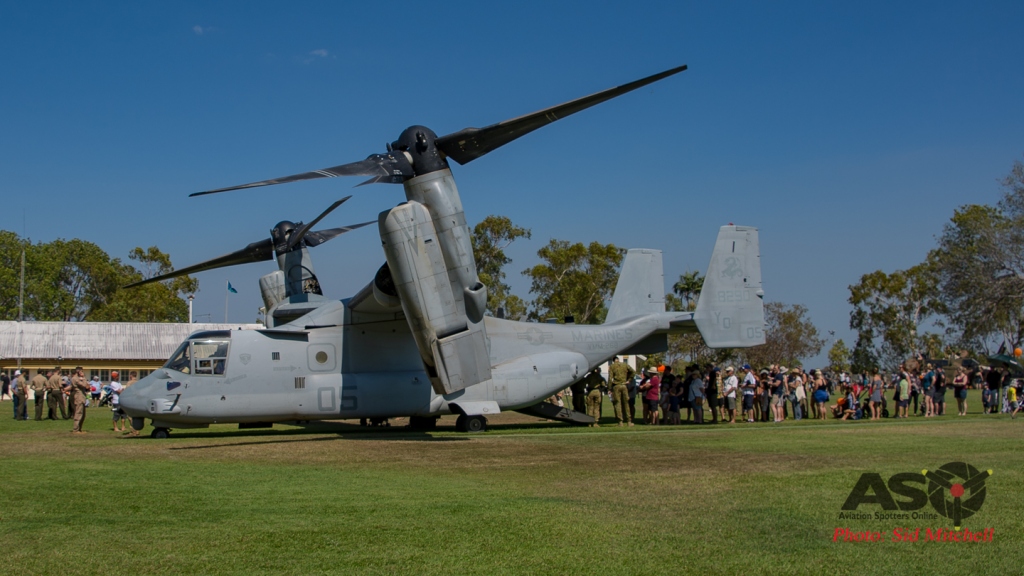


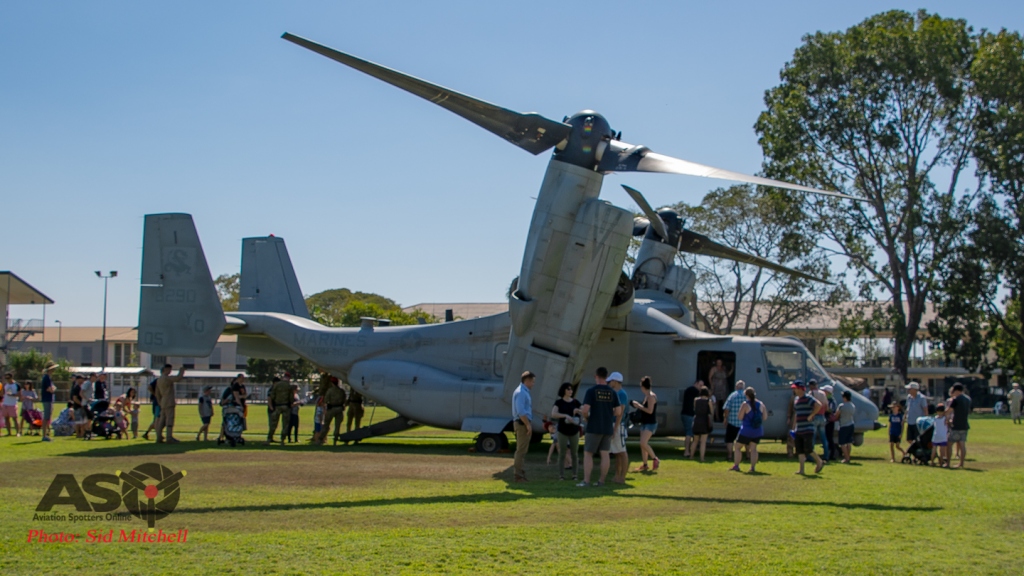






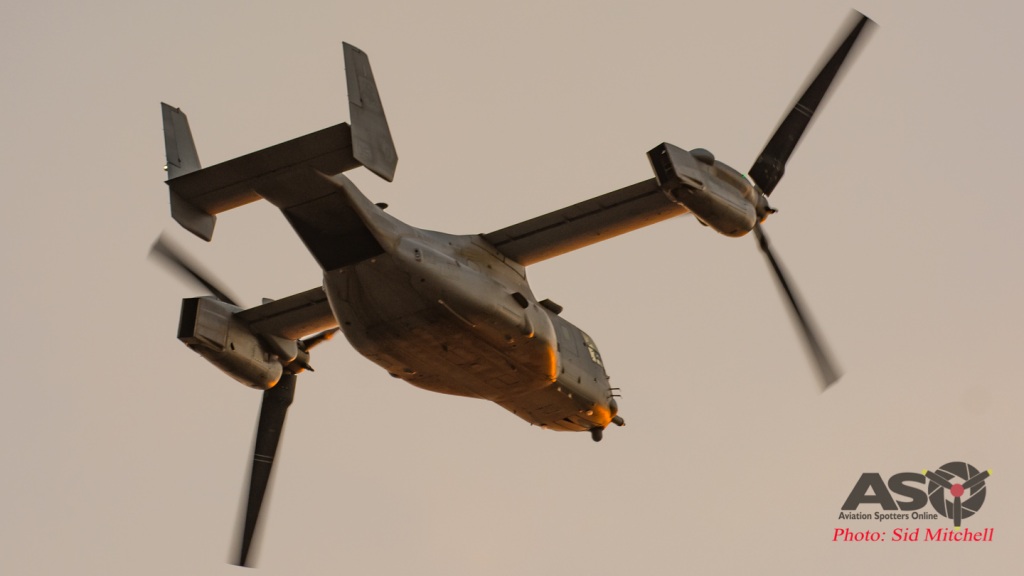




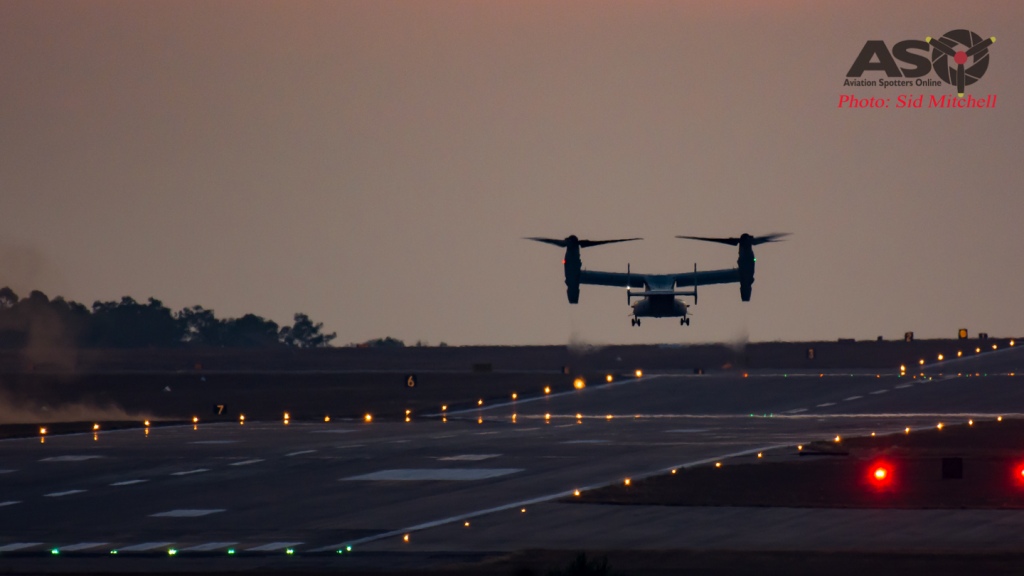
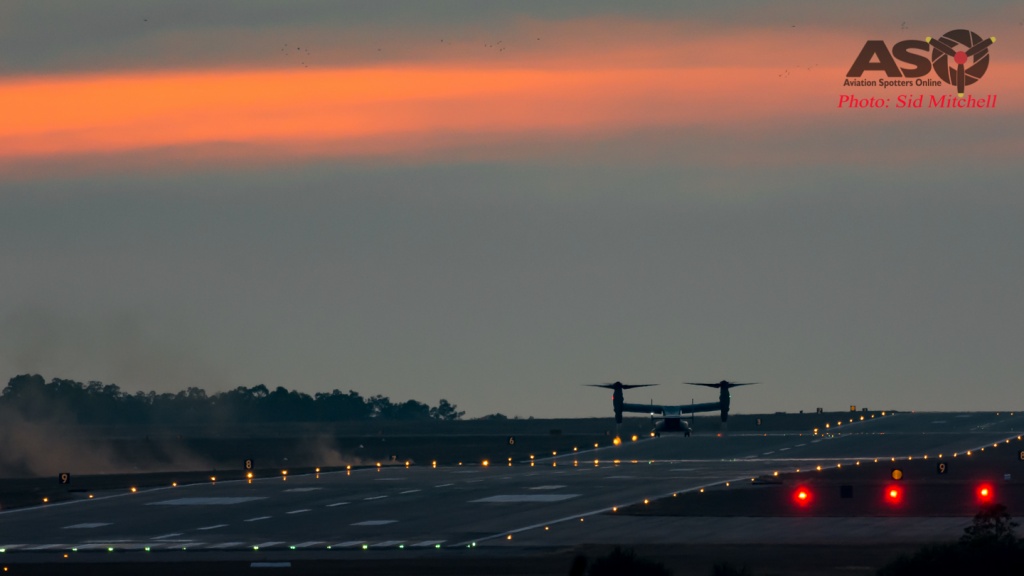
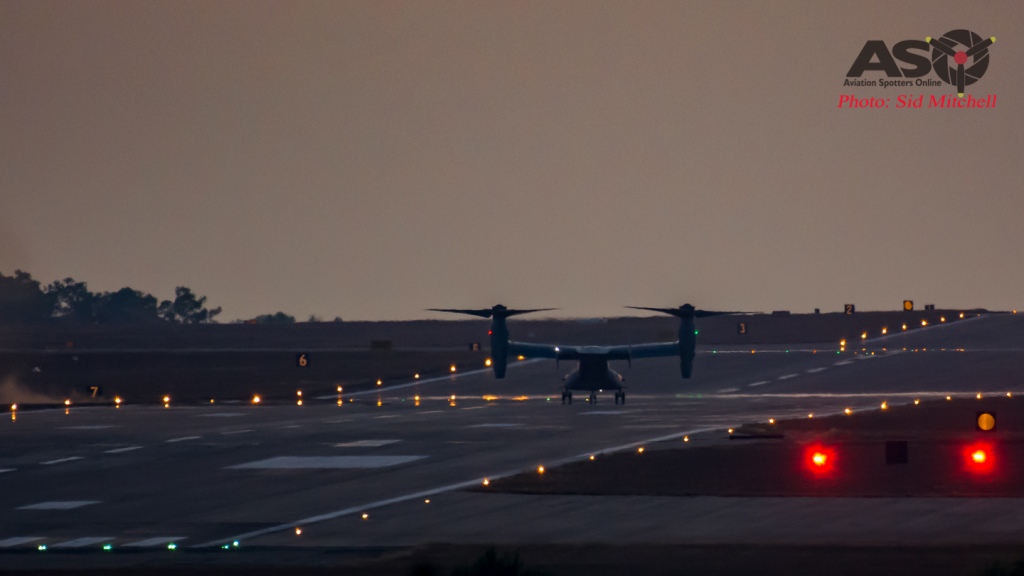
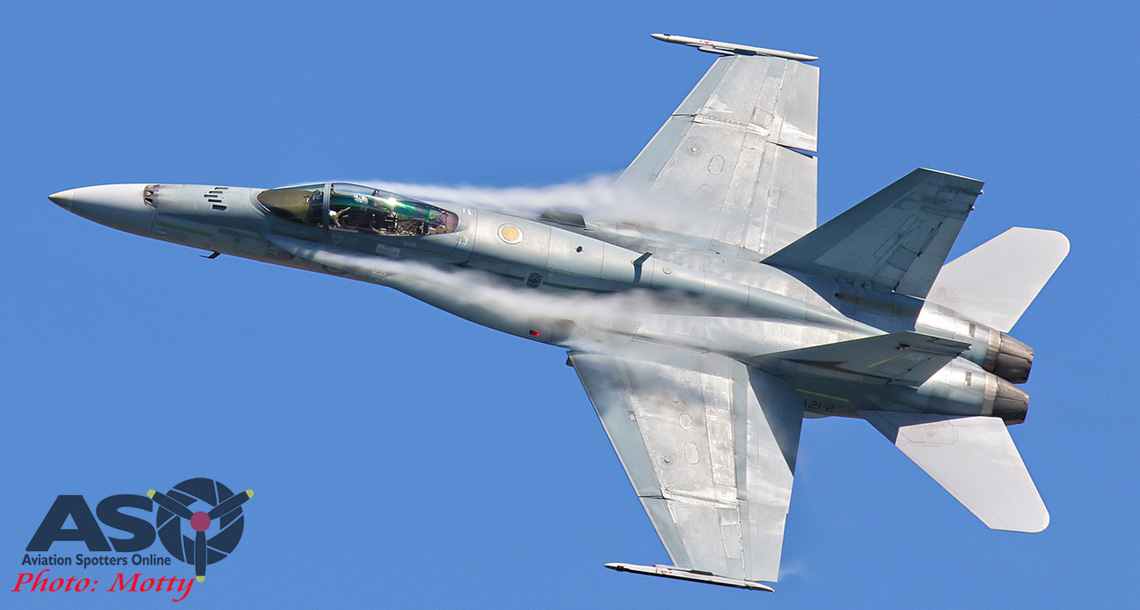
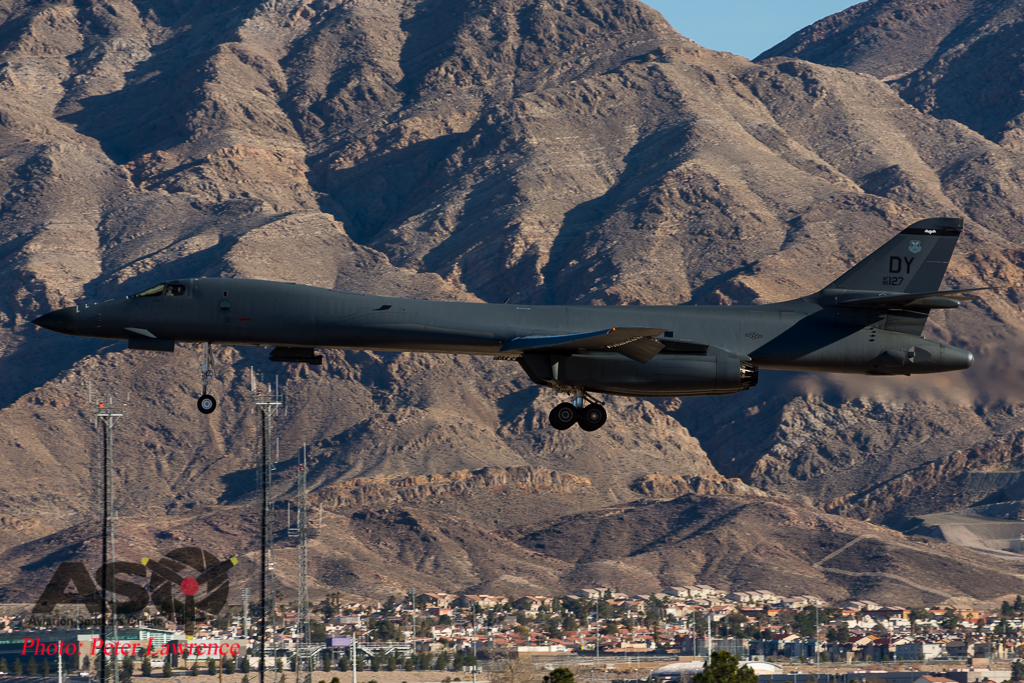
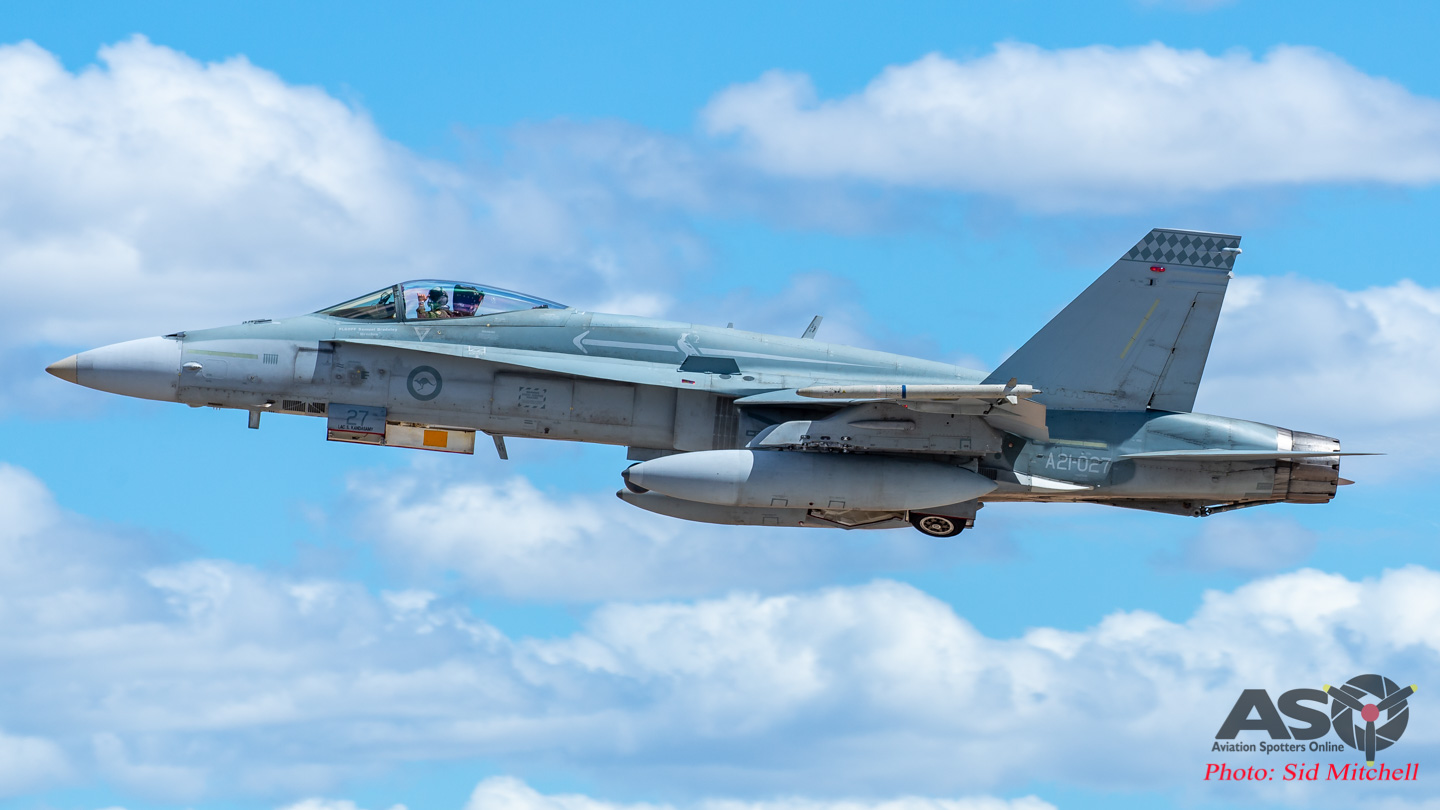





That’s a fabulous wrap up of a unique aircraft, Sid. Thanks so much for sharing. Alfred
Thanks for the kind comments Alfred, they are an unusual aircraft indeed and as a local you can certainly notice their unique sound they make when flying in and out of Darwin. We hope they continue to come to Australia – maybe further down during exercises so others can get an opportunity to see them as well. For me, I actually only saw one for the first time in 2015.
Many thanks – just a beautiful write up, and photos, very, very jealous!
Being in DRW, and having the photo expertise – just thanks once again from down south! Makes my day!
Cheers Clive, I feel privileged to be able to share pics of the variety of aircraft we are fortunate to have operate in Darwin or just pass through. I do know. If you ever have the chance to travel to Darwin, some of the exercises each year can offer great opportunities to catch jets, props or helicopters from the end of the main runways. Exercise Pitch Black every two years (next occuring in 2018) draws many to the Top End for holidays.
Dear Sid. What a unique task you have in producing these wonderful memories for us old aviators who cannot be at all points of the globe when aviation is committed. The liaison with these USMC crews is also a refreshing insight into their sometimes difficult role. Kindest regards and keep the JPEGs rolling.
Hi Bevan, yes I certainly appreciate how fortunate that I can combine a hobby with some fantastic aviation gear that passes through the Top End at times and share it with others. I love the ‘old school’ machines (ex RAAF Armourer myself) – they tend to have some ‘character’ thats just not found in modern airframes and can trigger great memories for those that flew, constructed or worked on them. On the other hand it is always interesting to see contemporary equipment that the latest aviators strap themselves into – sometime that gear is just amazing. I do have a few museums and airshows on the bucket list – one day maybe hahaha.